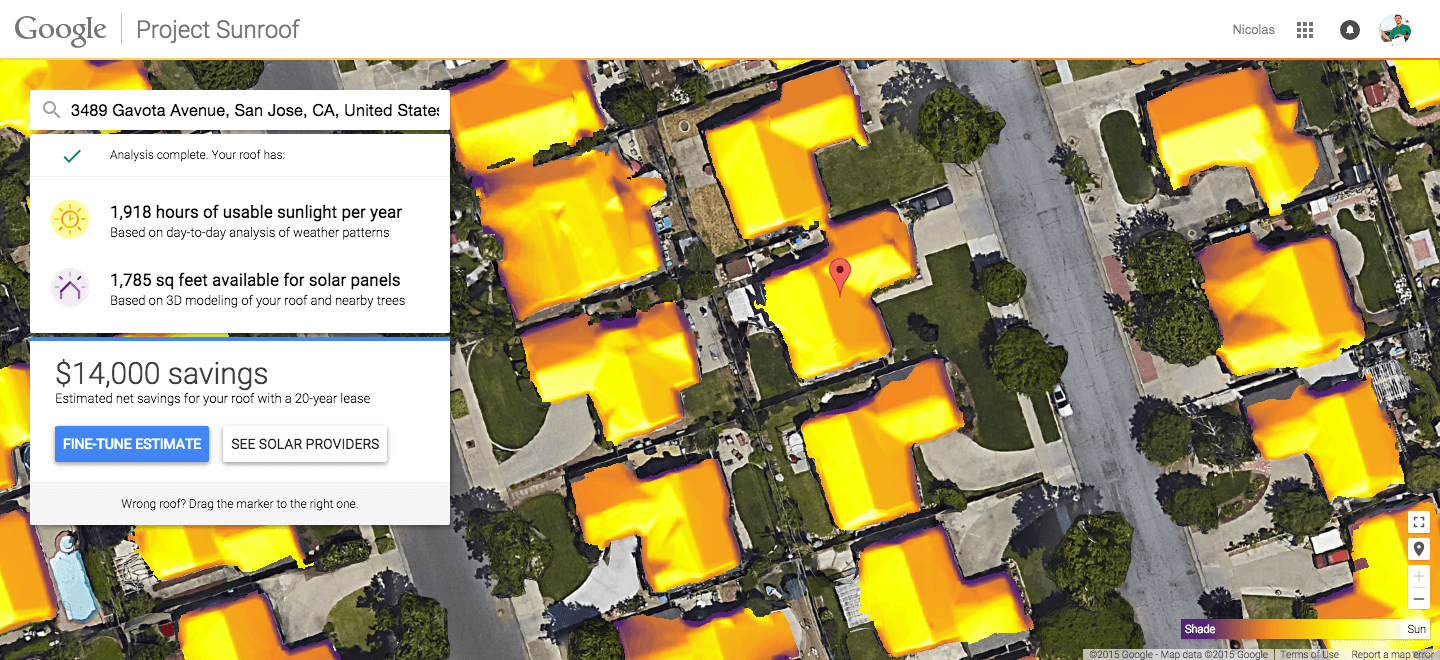Solar mapping by Google has spread across the U.S. and now to select German cities.
Google’s solar mapping initiative entitled “Project Sunroof” became available in three U.S. cities–Boston, Fresno and San Francisco– late in 2015. The long-term plan is to expand across the country, and eventually, the globe. The brainchild of Google Engineer Carl Elkin, Project Sunroof now covers most metropolitan areas in the United States, and last week expanded to cover Munich, Berlin, Rhine-Main and the Ruhr areas in Germany.
Project Sunroof data is now integrated on www.eon-solar.de. On the site, people can investigate their home’s solar potential, as well as purchase a suitable system consisting of photovoltaic modules, energy storage, and system management software provided by E.ON. As of this month, the online tool covers about 40 percent (roughly 7 million) of German homes.
Germany is topped only by China among nations for total installed solar capacity, with nearly 7% of the nation’s total electrical generating capacity coming from a combination of distributed independent and rooftop solar arrays as well as larger industrial installations and solar farms. Germany has long stood as an example of how effective solar can be at higher latitudes. However, growth in the solar industry has slowed in the last five years. E.ON and other solar companies are looking for ways to increase sales, and hosting Project Sunroof on their website could very well be a boon to the company because of the solar calculator’s integration into the Google portfolio.
 The motto of Project Sunroof is “”Mapping the planet’s solar potential, one roof at a time.” The project uses imagery from Google Earth and Maps and performs an analysis that takes into account a variety of factors that may impact the site and to determine the solar potential of any given roof. There are currently over 60 million buildings in the database of buildings, which covers all 50 states.
The motto of Project Sunroof is “”Mapping the planet’s solar potential, one roof at a time.” The project uses imagery from Google Earth and Maps and performs an analysis that takes into account a variety of factors that may impact the site and to determine the solar potential of any given roof. There are currently over 60 million buildings in the database of buildings, which covers all 50 states.
The analysis of solar potential is not the only function performed by Project Sunroof. In a blog post from 2015, engineer Carl Elkin explained that…”To provide accurate estimates, Project Sunroof uses a unique set of data that assesses how much sunlight your roof gets, the orientation, shade from trees and nearby buildings, and local weather patterns—essentially creating a solar score for every rooftop that it maps. You can then provide your current average electricity costs and compare them to what you’d pay with solar. So not only can you learn whether your house is a good fit for solar panels, but you can also determine whether paying for installation will pay off in the long run — in short, see the effect sunlight can have on your wallet.”
Project Sunroof is by no means the only solar calculator on the web. However, its integration into google maps is impressive, and it combines elements of many other online databases into a one-stop shop. Its system sizing tool is on par with others like PV Watts from the National Renewable Energy Laboratory, and Project Sunroof even integrates a search feature to explore financial incentives, similar to the information on the Database of State Incentives for Renewables and Energy Efficiency (DSIRE). Project Sunroof is, of course, a commercial endeavor, and user data is collected and made available to solar installation companies. So don’t be surprised if you receive advertisements from your friendly local solar installer after analyzing your solar potential with Project Sunroof.





